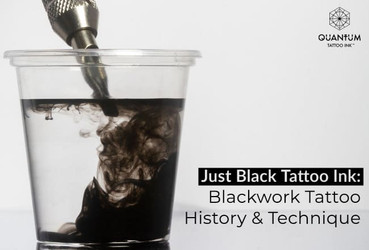Just Black Tattoo Ink: Blackwork Tattoo History & Technique
Apr 25th 2023
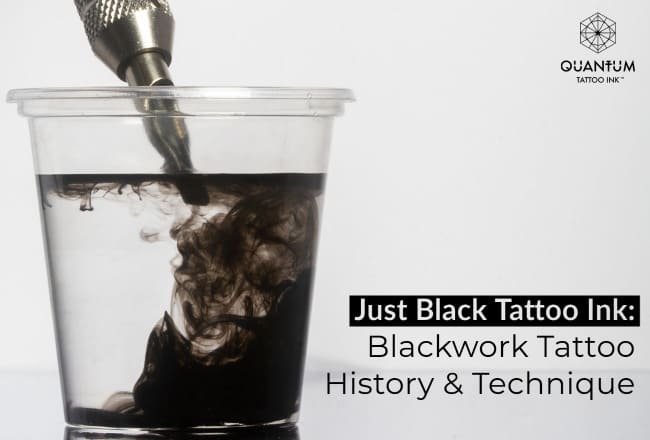
Through the years, tattoo styles and trends come and go. However, blackwork tattoos are the style that has lasted the longest and has remained one of the most widely used around the world. From its ancient origins to its modern variations, blackwork tattoos have offered a bold solution to those looking to express themselves through the art of tattoo. This article will explore the history of blackwork tattoos as well as some of the most common contemporary blackwork styles and the tools of the trade when it comes to blackwork tattoos.
What Is a Blackwork Tattoo?
A blackwork tattoo is a tattoo that uses only solidblack tattoo ink without shading or other colors. That means, no white tattoo ink or gray wash is used. However, this does not necessarily mean that tattoos are two-dimensional.
What Are the Established Blackwork Tattoo Rules?
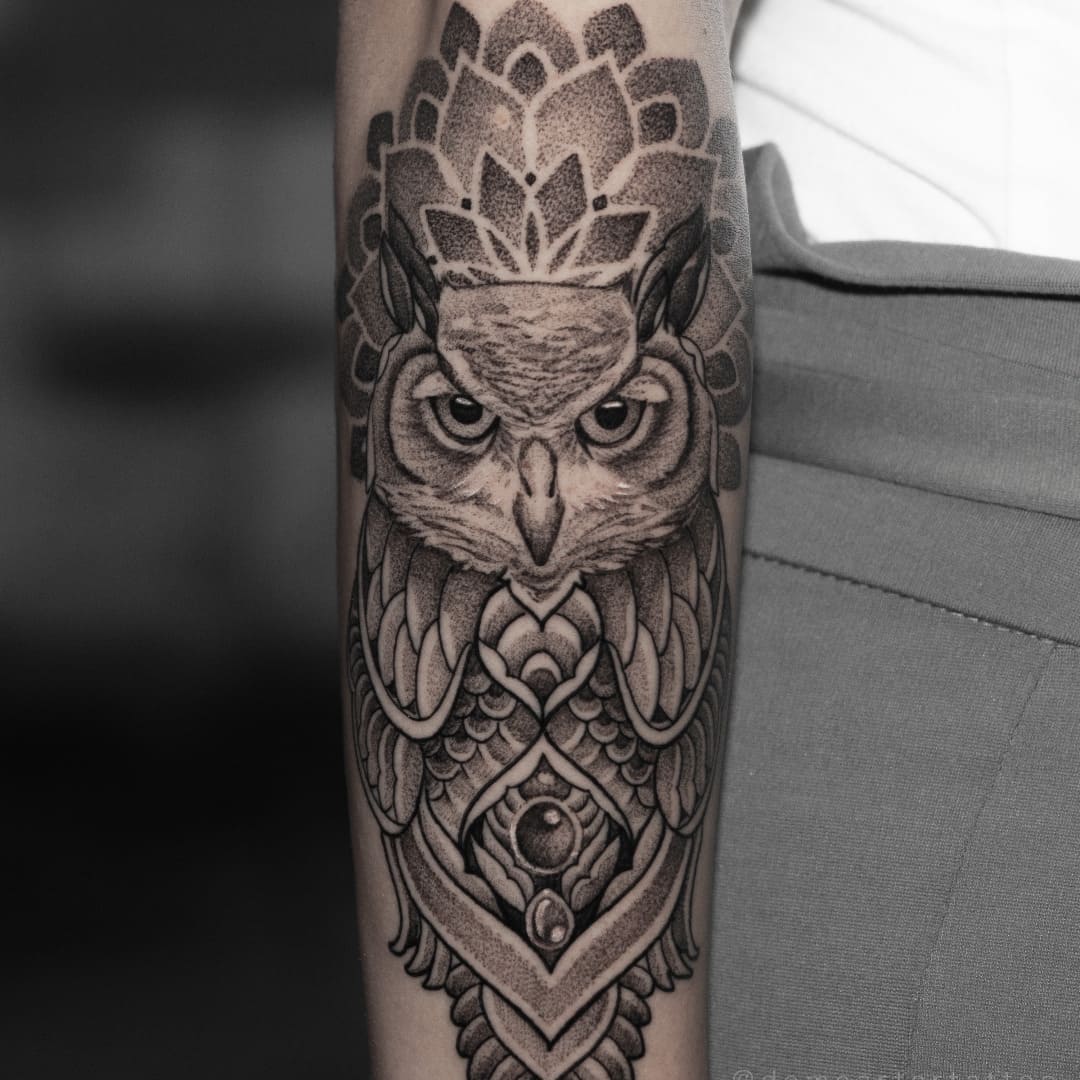 Blackwork tattooing has only one golden rule: only use black tattoo ink. However, there are specific guidelines that can help you follow the golden rule of blackwork tattooing:
Blackwork tattooing has only one golden rule: only use black tattoo ink. However, there are specific guidelines that can help you follow the golden rule of blackwork tattooing:
Do not use gray wash: Using gray wash to create shading, depth, or dimension is off-limits.
Do not use white or colored ink: This seems obvious but it bears repeating tattoos that include white tattoo ink or other colors of tattoo ink are not blackwork tattoos.
Get creative: While many people associate blackwork with blackout tattoos or solid tribal patterns, using techniques like dot work and cross-hatching adds depth, dimension, and complexity without breaking the golden rule.
The Early History of Blackwork Tattoos
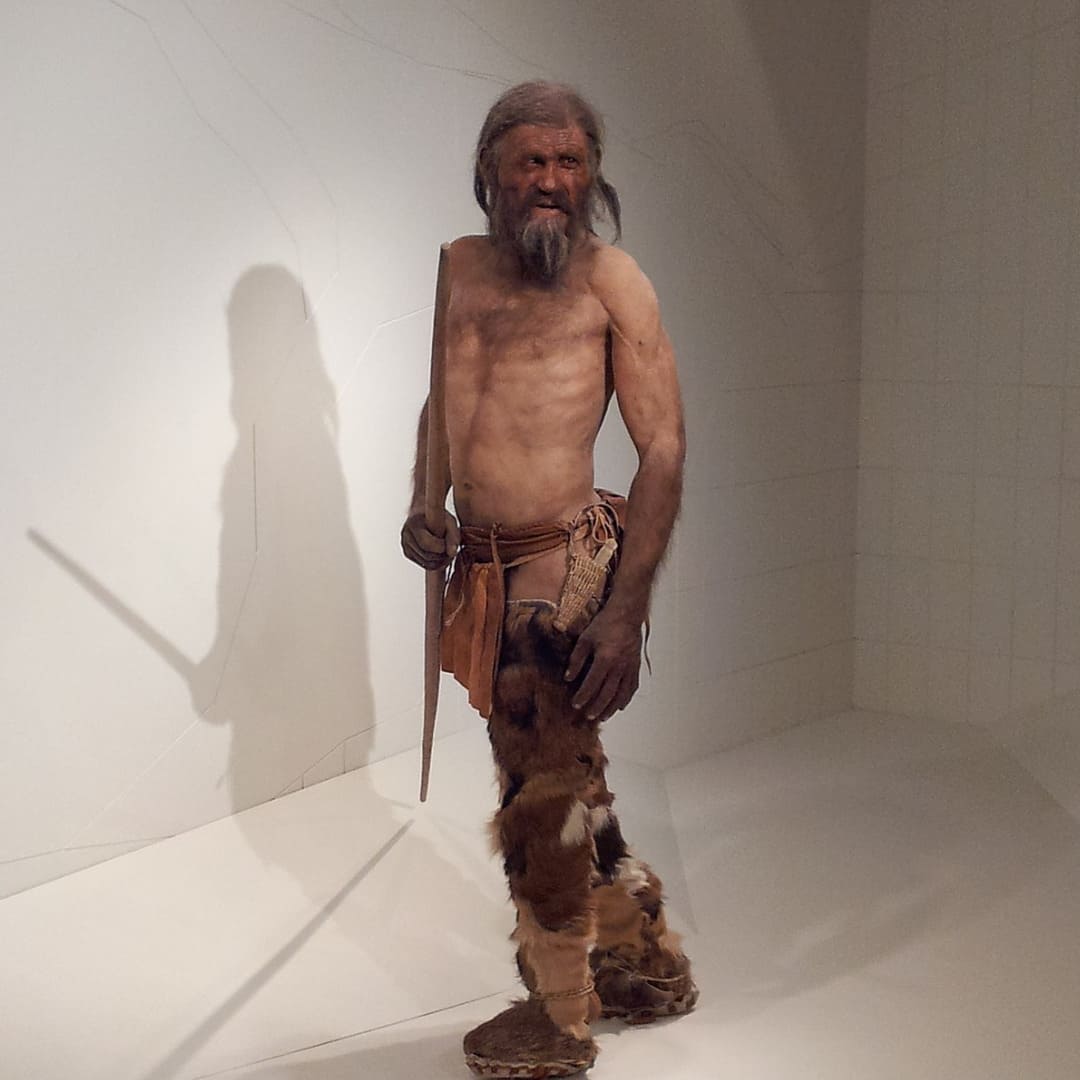
Since the discovery of Ötzi the Ice Man, we have evidence that people were getting tattooed for about 5,000 years. Ötzi, who lived sometime between 3350-3100 BCE, had a total of 61 tattoos consisting mostly of solid black lines. Scientists believe that the black tattoo ink used to tattoo the Ice Man was made from fireplace ash or soot. Because he appears to be tattooed over and over in some of these spots, scientists also believe that he was tattooed for some sort of therapeutic purpose.
Since the discovery of Ötzi, scientists have also found evidence of tattooing in Egypt that is thought to have been from around the same period. In fact, Egyptian figurines from as early as 4000-3500 BCE were adorned with tattoos. The earliest tattooing in Eqypt seems to have been reserved for women, as exemplified by 3 female mummies dating from about 2000 BCE. Wooden tattoo instruments dating back to about 3000 BCE and bronze implements dating back to about 1450 BCE have been found in Egypt. Other ancient cultures known to have practiced the art of tattooing include the Nubians to the south of Egypt, the Scythian Pazyryk people of the Altai Mountain, and ancient Britons.
Since then, people on all continents, have incorporated tattoos, mainly those using black tattoo ink or blue tattoo ink, into their culture in varying significant ways. Blackwork tattoos make up a large portion of the tribal tattoos that have been seen in cultures around the world for centuries.
Most Popular Types of Blackwork Tattoos Today
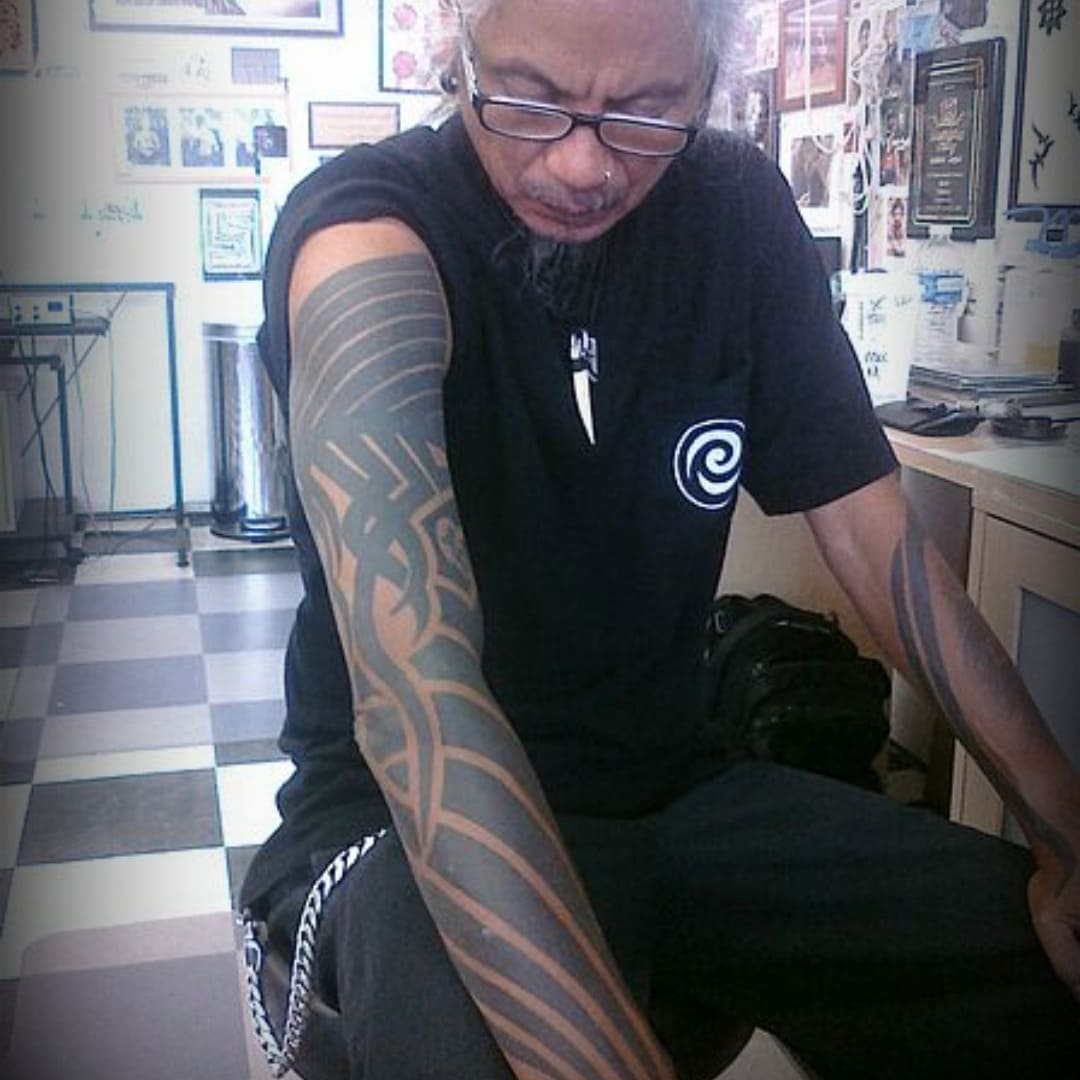
While the most recognizable and common type of blackwork tattoo remains the tribal tattoo, there are a variety of styles of blackwork tattoos that are popular today. Here are just a few of the most popular:
Tribal/Neo-tribal tattoos: This style is best exemplified by the man considered to be “the father of modern tribal tattooing,” Leo Zulueta (pictured above). In the 90s, he published a booklet containing many of the tattoo designs he had created after traveling the world to study tribal tattoos. This booklet sparked the huge wave of neo-tribal tattooing that became popular worldwide at that time.
Blackout tattoos: Besides tribal, this is the style people currently imagine when they hear the term blackwork tattoo. In fact, the terms “blackout tattoo” and “blackwork tattoo” are often mistakenly used interchangeably by those who don’t know the difference. This style of tattoo is when an artist uses solid black tattoo ink to cover large areas of the person’s body.
Most often, this is usually done on the arms or legs, however, in recent years, people have completed full bodysuits incorporating full or partial blackout elements.
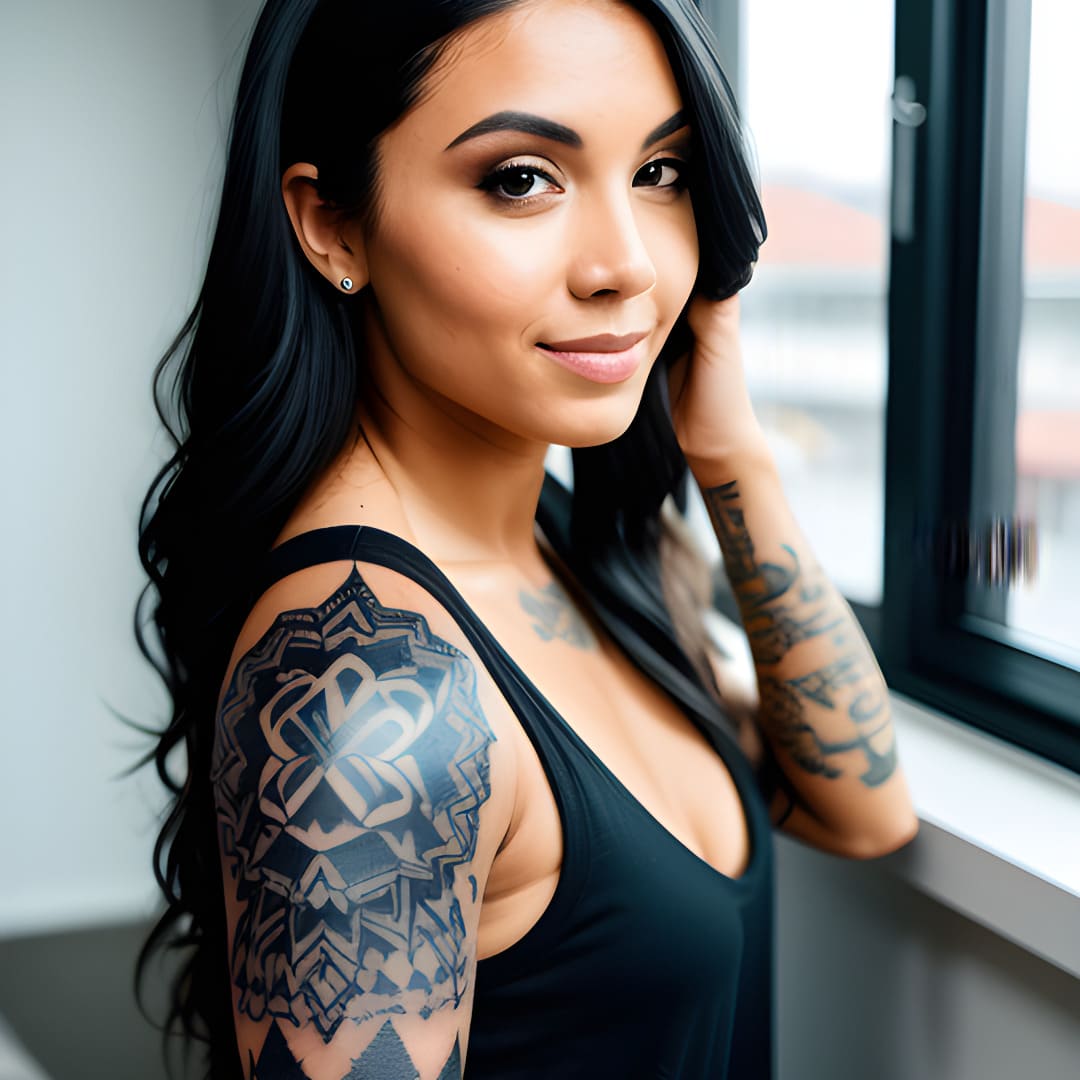
Geometric tattoos: Like tribal tattooing, this style is influenced by centuries-old cultures and traditions. Namely, Buddhist and Hindu traditions as well as Plato’s philosophy regarding “sacred geometry.” These tattoos consist of mandalas, fractals, and other geometric patterns.
Ornamental tattoos: This style of blackwork tattoo is similar to a geometrical tattoo. However, the shapes in ornamental tattoos have more curves and intricate patterns. Popular for women because of their feminine elements, they sometimes resemble henna tattoos or lace.
Dark art tattoos: Dark art tattoos usually portray themes of the supernatural, surreal, macabre, and enigmatic. They are a representation of the dark energy that surrounds us. This style is more illustrative and often depicts scenes and characters. While dark art tattoos are often done in black and gray, there are quite a few examples of it done with just black tattoo ink. Examples of blackwork dark art tattoos use dot work and other techniques to achieve depth and dimensions.
Lettering tattoos: While many lettering tattoos include shading and colors, lettering tattoos that are done with only black tattoo ink are considered blackwork tattoos.
Quantum Has the Best Supplies and Black Tattoo Ink for Blackwork Tattoos
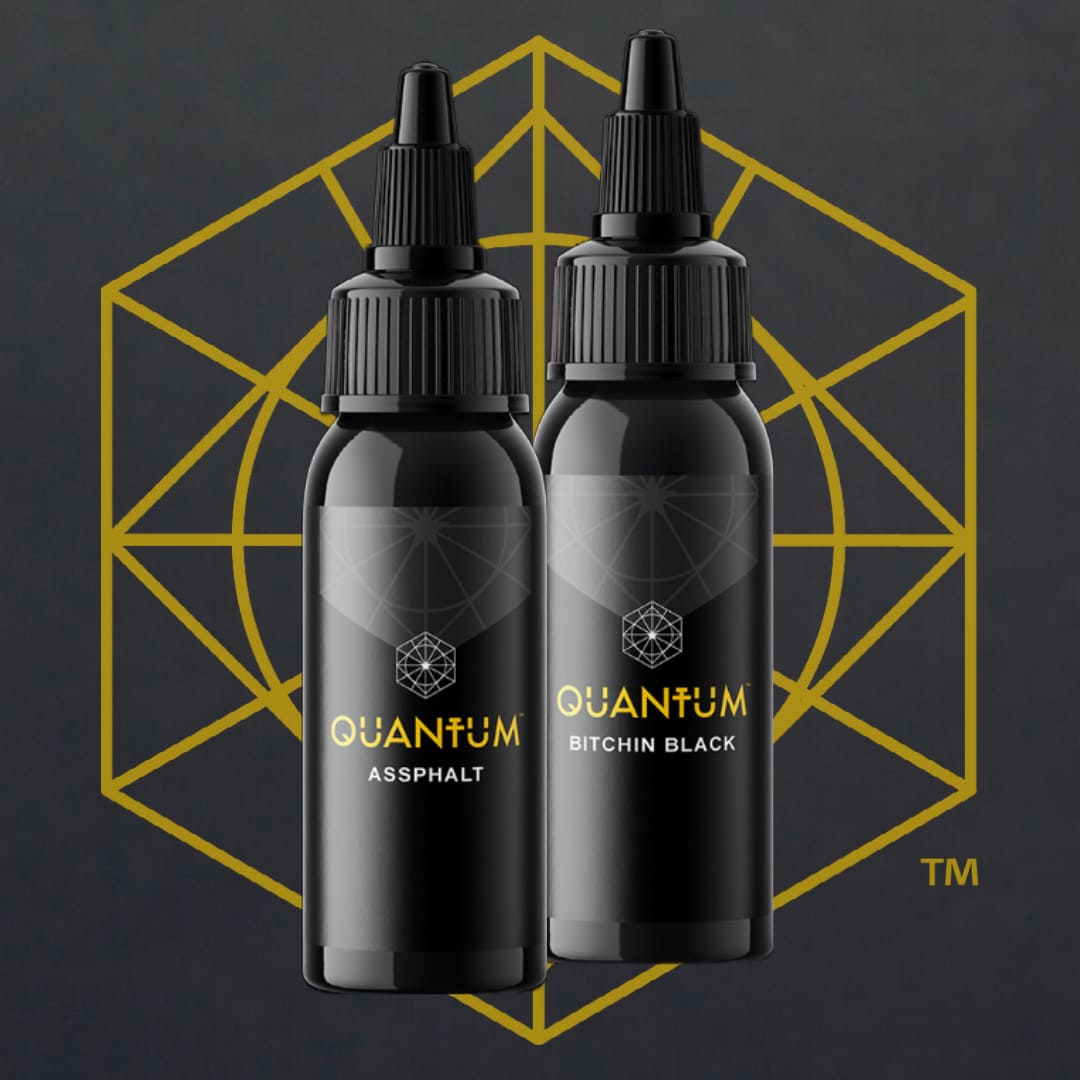 Solid blackwork, especially when done over large areas requires a significant amount of fill-in work. For blackout tattoos, it is more crucial than with any other tattoo type to use only high-quality tattoo needle cartridges and ink. Pack too deeply, and you risk a blowout. Going over the area too many times can cause excessive tissue breakdown, bleeding, and infection. On the other hand, if the ink is not pigmented enough or packed well, your client could end up with lighter spots, premature fading, or an overall uneven appearance. These issues will be made more noticeable because of the larger areas of solid black tattoo ink.
Solid blackwork, especially when done over large areas requires a significant amount of fill-in work. For blackout tattoos, it is more crucial than with any other tattoo type to use only high-quality tattoo needle cartridges and ink. Pack too deeply, and you risk a blowout. Going over the area too many times can cause excessive tissue breakdown, bleeding, and infection. On the other hand, if the ink is not pigmented enough or packed well, your client could end up with lighter spots, premature fading, or an overall uneven appearance. These issues will be made more noticeable because of the larger areas of solid black tattoo ink.
Fortunately, Quantum has you covered if you want to create safe, outstanding, and long-lasting blackwork tattoos. These are our top recommended products for blackwork tattoos:
Assphalt: Assphalt is the original black tattoo ink that we became known for! With a 70% pigment concentration of both jet black and carbon black pigments, it is ideal for fill-in and solid blackwork. Plus, it will not fade to blue.
Bitchin Black: Bitchin Black is our most versatile black tattoo ink. It is made with a combination of carbon black pigment, jet black pigment, and extreme jet black pigment in an 80% pigment concentration. It is a little thinner than other solid black tattoo inks, so it also works great for outlining. Like Aassphalt, this black tattoo ink will not fade to blue.
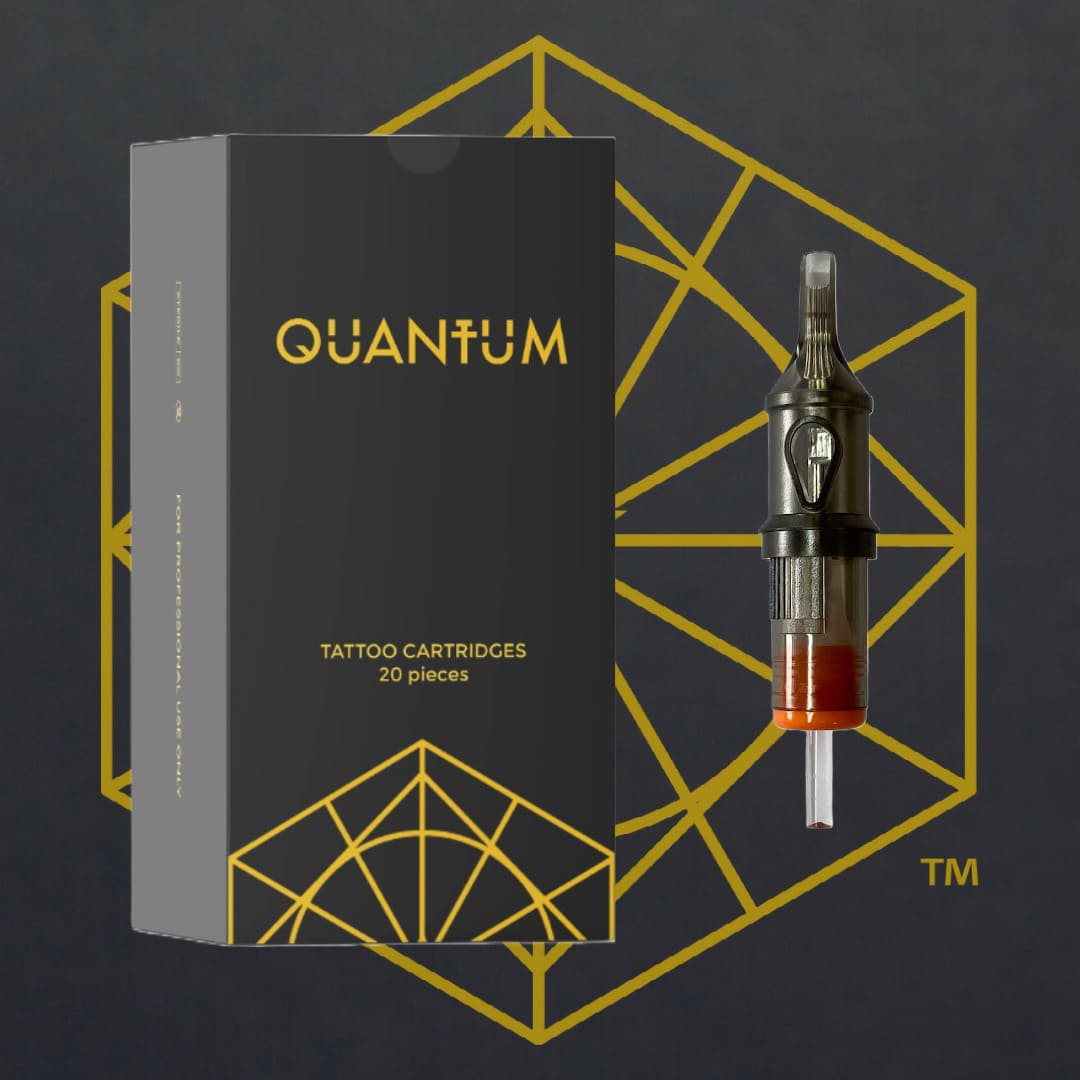
Magnum Cartridges: Our magnum cartridges are the perfect solution for fill-in and solid blackwork. Choosing the largest mag possible for your design will get you the most even coverage without having to go over the area as many times. This helps prevent tissue breakdown issues that can occur from overworking the area while giving you consistent coverage.
Blackwork tattoos can be both a nod to ancient tattoo traditions and a modern and bold form of self-expression. With the right style, technique, and tools, you have the foundation you need to create exceptional and striking blackwork tattoos.
To stay on top of all things tattoo, including product safety, tattooing tips, and industry trends, follow us on Instagram or Facebook.

